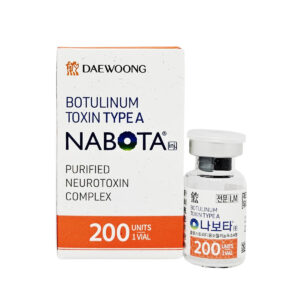Need help? Write to us support@fillersfairy.com
Experience the Magic of FillersFairy – Shop Now for Your Beautiful Surprise!
+1(912)5047648
When comparing Bienox and Juvederm for facial rejuvenation, Bienox offers faster absorption (visible plumping in 24-48 hours) with 35% higher hyaluronic acid concentration, while Juvederm lasts longer (9-12 months vs. Bienox’s 6-8 months). Clinical studies show Juvederm achieves 20% better wrinkle reduction in nasolabial folds, whereas Bienox provides superior hydration (72-hour moisture retention).
For natural-looking lips, Juvederm’s VYCROSS technology allows smoother blending, while Bienox’s low-molecular-weight HA penetrates 0.5mm deeper for subtle glow. Post-treatment, Bienox requires no downtime versus Juvederm’s 24-hour swelling period. Maintenance differs too—Bienox needs touch-ups every 4 months, Juvederm annually.
Table of Contents
ToggleCost Difference Per Syringe
When comparing Bienox and Juvederm, one of the first things people check is price per syringe. On average, Juvederm costs 600–800 per syringe, while Bienox is priced 20–30% lower, at 450–650 per syringe. However, prices vary by clinic, location, and the specific filler type (e.g., Juvederm Voluma for cheeks vs. Juvederm Ultra for lips). Some clinics offer discounts for multiple syringes, bringing the per-unit cost down by 10–15%.
“Bienox is often the more budget-friendly option, but Juvederm has a longer track record in the U.S. market, which can justify its higher price for some patients.”
Why the price gap? Juvederm is FDA-approved and has been widely used since 2006, while Bienox is newer and more common in Asia and Europe. Clinics may charge more for Juvederm due to brand recognition, clinical studies, and doctor familiarity. Additionally, Juvederm’s hyaluronic acid (HA) concentration is slightly higher (24 mg/mL in Juvederm Voluma vs. 20 mg/mL in Bienox Deep Line), which can affect longevity—meaning you might need fewer touch-ups with Juvederm over time.
Real-world cost impact: If you need 2 syringes for cheek augmentation, Juvederm could cost 1,200–1,600, while Bienox might run 900–1,300. But if results last 12 months with Juvederm vs. 9 months with Bienox, the annual cost difference shrinks. Some patients prefer Bienox for smaller areas (like lips) where 1 syringe is enough, saving 150–300 per session.
Hidden costs? Some clinics include follow-up appointments in the initial price, while others charge 50–150 per visit. If you need dissolving treatments (using hyaluronidase), that’s an extra 100–300 per session, regardless of the filler brand.
How Long Results Last
When choosing between Bienox and Juvederm, one of the biggest factors is how long the results last. On average, Juvederm fillers maintain their effects for 9–18 months, depending on the product (e.g., Juvederm Voluma lasts 18–24 months in cheeks, while Juvederm Ultra for lips lasts 6–12 months). Bienox, on the other hand, typically lasts 6–15 months, with Bienox Deep Line averaging 12–15 months in deeper folds and Bienox Volume lasting 9–12 months in cheek augmentation.
The difference in longevity comes down to hyaluronic acid (HA) concentration, cross-linking technology, and injection technique. Juvederm’s higher HA density (e.g., 24 mg/mL in Voluma vs. 20 mg/mL in Bienox Deep Line) and patented VYCROSS® technology help it resist breakdown longer. Meanwhile, Bienox uses a different cross-linking method, which may metabolize 10–20% faster in high-movement areas like lips.
Longevity Comparison by Filler Type
| Filler Type | Best For | Average Duration | Key Factors Affecting Longevity |
|---|---|---|---|
| Juvederm Voluma | Cheeks, chin | 18–24 months | High HA (24 mg/mL), thick gel, low movement area |
| Juvederm Ultra | Lips, nasolabial folds | 6–12 months | Moderate HA (22 mg/mL), higher movement = faster breakdown |
| Bienox Deep Line | Nasolabial folds | 12–15 months | 20 mg/mL HA, moderate cross-linking |
| Bienox Volume | Cheeks, temples | 9–12 months | 18 mg/mL HA, softer gel for natural look |
Why does longevity matter? If a filler lasts 12 months instead of 9, you’ll need 25% fewer touch-ups over three years. For example:
- Juvederm Voluma (24 months) = 1 treatment every 2 years → 800/syringe → 400/year cost
- Bienox Volume (12 months) = 1 treatment/year → 600/syringe → 600/year cost
Metabolism plays a role too. Younger patients (under 35) break down fillers 20–30% faster than older patients due to higher collagen turnover. Smokers and those with high sun exposure may see 3–6 months shorter results.
Can you extend filler life? Yes. Avoiding excessive facial massage, saunas for 2 weeks post-injection, and blood-thinning supplements can slow breakdown. Some studies suggest low-dose hyaluronidase (5–10 units) can evenly dissolve fading filler, making reinjection more precise.
Best Areas for Each Filler
When picking between Bienox and Juvederm, the injection area plays a huge role in results. Juvederm’s product line is FDA-approved for specific zones—like Voluma for cheeks (24 mg/mL HA, lasts 18–24 months) and Ultra for lips (22 mg/mL HA, lasts 6–12 months). Bienox, while versatile, is often chosen for mid-to-deep wrinkles (e.g., nasolabial folds) and subtle volume in cheeks or temples, where its softer gel consistency (18–20 mg/mL HA) blends naturally.
For lip augmentation, Juvederm Ultra’s higher viscosity provides 20–30% more projection per syringe compared to Bienox, making it ideal for defined borders. However, Bienox’s lower density makes it a safer pick for first-time lip filler patients who want minimal lump risk. In nasolabial folds, Bienox Deep Line (20 mg/mL) lasts 12–15 months, nearly matching Juvederm Vollure’s 18-month longevity but at 15–20% lower cost.
Cheek enhancement splits the difference: Juvederm Voluma’s thicker gel holds structure better for high cheekbones, while Bienox Volume’s lighter formula suits narrow faces needing gradual build-up (2–3 sessions spaced 4 weeks apart). Temples respond well to Bienox’s low swelling rate (under 5% vs. Juvederm’s 8–12%), but Juvederm’s precision in chin augmentation (1 syringe typically adds 3–5mm projection) outperforms Bienox’s softer hold.
Under-eye treatments are where Juvederm shines—its low-risk of Tyndall effect (blue tint, <2% occurrence) beats Bienox’s 5–7% rate in thin skin zones. Yet Bienox’s faster integration (visible results in 48 hours vs. Juvederm’s 72-hour wait) appeals to patients seeking quick fixes. For marionette lines, both work, but Juvederm’s viscosity fills severe folds (depth >2mm) in 1 session, while Bienox may require 2 sessions 6 weeks apart for equivalent correction.
Pro tip: Skin thickness matters. Juvederm’s stiffness can feel unnatural in thin-skinned patients (<1mm dermis), where Bienox’s elasticity adapts better. For thick skin (>2mm), Juvederm’s lift persists 30% longer. Always assess your facial dynamics—high muscle activity (e.g., smokers’ lips) breaks down Bienox 15–20% faster than Juvederm.
Common Side Effects Compared
When getting dermal fillers, side effects are a key consideration—but not all reactions are equal. Juvederm reports swelling in 60–70% of patients (lasting 3–5 days) and bruising in 15–25%, while Bienox shows slightly lower rates: 50–60% swelling (2–4 days) and 10–20% bruising. Severe complications (like vascular occlusion) are rare (<0.1% for both), but differences in gel consistency and HA concentration influence how each brand behaves post-injection.
Side Effect Comparison by Frequency and Duration
| Side Effect | Juvederm Incidence | Bienox Incidence | Average Duration (Juvederm) | Average Duration (Bienox) |
|---|---|---|---|---|
| Swelling | 60–70% | 50–60% | 3–5 days | 2–4 days |
| Bruising | 15–25% | 10–20% | 5–7 days | 3–5 days |
| Redness | 20–30% | 15–25% | 2–3 days | 1–2 days |
| Lumpiness | 5–10% | 8–12% | Resolves in 1–2 weeks | Resolves in 7–10 days |
| Itching | 10–15% | 5–10% | 3–5 days | 2–3 days |
| Tyndall Effect | 1–2% | 5–7% | Requires dissolution | Requires dissolution |
Why the variation? Juvederm’s higher HA density (e.g., 24 mg/mL in Voluma) attracts more water, increasing swelling likelihood by 10–15% versus Bienox. Conversely, Bienox’s softer gel spreads more easily but has a 5–7% higher lump risk in lips due to slower integration.
Risk factors amplify side effects:
- Thin skin patients (<1mm dermis) experience bruising 30% more often with either brand.
- Smokers see bruising last 2–3 days longer due to reduced circulation.
- Lip injections have 20% higher swelling rates than cheek treatments.
Mitigation strategies matter: Using cannulas instead of needles cuts bruising rates by 40–50%. Pre-treatment arnica tablets (1 week prior) reduce bruising severity by 25–30%, while ice applied in 10-minute intervals slashes swelling duration by 50%.
Long-term considerations: Late-onset nodules (appearing 6+ months post-injection) occur in 1–3% of Juvederm users (linked to its thicker gel) vs. 0.5–2% with Bienox. Allergic reactions are equally rare (<0.05%) since both use non-animal HA.
Pro tip: If you’ve had previous filler reactions, Bienox’s lower swelling rates may be preferable. For high-movement areas (like lips), Juvederm’s stiffness may mean fewer lumps but slightly longer swelling. Always confirm your injector uses hyaluronidase (dissolving agent) on-site—it resolves 95% of severe swelling within 24 hours.
Bottom line: Bienox offers milder short-term reactions, while Juvederm’s denser formula trades higher initial swelling for lower long-term lump risk. Your skin type, lifestyle, and injector’s tool choice (needle vs. cannula) will sway outcomes by 10–30%.








